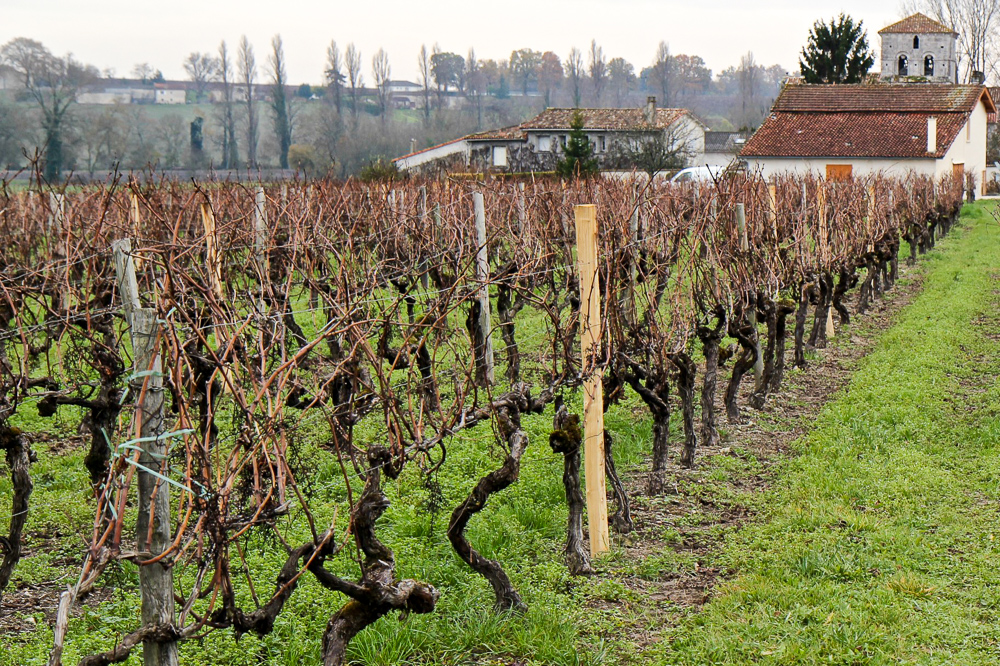A Frosty Outlook
It's no secret in the wine world that the Bordelais are always looking for a reason to raise their costs. Every year when we make the trip out to Bordeaux to taste the latest vintage, our owner Clyde pleads with the producers to "keep the prices down" in an effort to combat that ever-present itch, but he's not always successful. In the mind of the wine marketer, there's always another "vintage of a lifetime" just around the corner. When the press about Bordeaux's incredible 2016 vintage began breaking, we knew to expect an increase in price over what we saw with the 2015 wines. However, when the 2017 growing season began with a terrible frost, decimating huge portions of Bordeaux's vineyards and throwing the vintage's potential yields into doubt, some producers used the threat of an upcoming shortage to continue raising the costs of the sixteens. There's no doubt that production levels for Bordeaux—if not most of France—will be down in 2017 as a result of the early season weather. But in Bordeaux, the April headlines were screaming about how vineyards had lost up to 90% of their vines. Was it really that bad? Bad enough to start jacking up prices for the previous vintages as a result? Knowing what we know about the tendency of château owners, we would have to wait and see. Like Joe Montana's 49ers, Bordeaux is known for its epic comebacks.
As someone who has worked in the wine business for ten years now, I'm well aware of the utility of blanket statements. I hear vintages summarized and compacted into descriptions like "good" and "bad" on a daily basis. The first question customers ask when asking about a particular Bordeaux bottle on the shelf is: "Was this a good year?" Much like the quality and flavor of Bordeaux's wines, the weather of any vintage varies from vineyard to vineyard and from producer to producer, so one word summations do a complete disservice to those in search of precision. In the case of 2017, as the information continued to flow we began to get a better picture about greater specifics. At the end of May, on Jancis Robinson's website, château owner Gavin Quinney provided a handy map about where exactly the frost was worst. Parts of the Right Bank and Entre-deux-Mers were indeed obliterated as reported, but Quinney writes that: "It would be perfectly reasonable to assume that if 50-70% of Bordeaux vineyards have been hit, the famous names have been similarly affected. This isn't the case, however. The most prestigious wines – and the ones that feature prominently in the en primeur or 'futures' sales campaign - come from the appellations of Pauillac, St-Julien, St-Estèphe, Margaux, Pessac-Léognan and Sauternes on the left bank, and St-Émilion and Pomerol on the right. The first three appellations were mostly spared, while significant parts of the other appellations were hit. The vast majority of the top 150 chateaux, as it turns out, were largely unaffected thanks to the location of their hallowed ground. (Another reason, of course, why these places are so sought after.)"
Could it be that the best wines of the Médoc—the wines that make up the bulk of collector consumer desire—escaped the worst of the frost and might end up with a reasonable harvest? That's apparently what Quinney thinks, but why speculate when I can go straight to the source? If Pauillac was relatively unscathed by comparison, why not ask one of the region's top properties about where the harvest is currently at? I reached out to Château Lynch-Bages owner Jean-Michel Cazes this past week who told me: "The harvest seems to be of a satisfactory size. The flowering went well and the maturity is even. For the harvesting plan, we are about one week ahead of schedule which is rather favorable for now. That being said, it is too early to draw conclusions. All we can say today is that it looks good and everything so far is fine. The final result will depend on the weather over the last five to six weeks."
As we know with any Bordeaux vintage, the conditions during harvest time can affect the quality of the resulting wine, but—again—that doesn't separate 2017 from any other previous vintage. While the original word about 2017 from Bordeaux was panic, it may turn out that a number of the region's best properties turn out just fine. We'll keep our fingers crossed until then.
-David Driscoll

